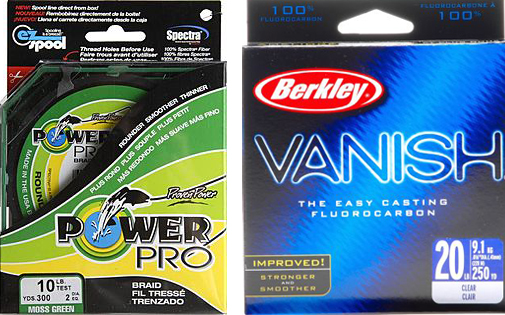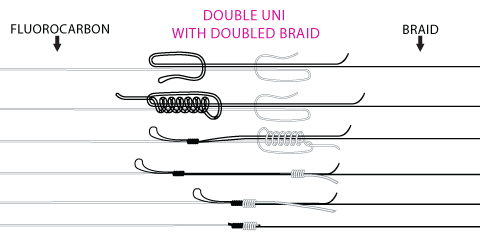
Captain Eric Greenstein © 2013 ~ Daytona’s Premier Inshore Saltwater Charter Fishing Guide Service


USCG Licensed and Insured
Call/Text 386-449-9043
Capt. Eric Greenstein

How To’s
Getting Started: So you just moved to Florida and you want to learn how to fish in Saltwater. Maybe your just here for a week long vacation and want to try your hand at fishing for our local species. Whether your accustomed to fishing in freshwater with a worm and bobber or you haven't been fishing in a years. You may feel overwhelmed by the selection of rods, reels, lines, lures, hooks, weights, leaders, and rigs. You really want success on the water or the ability to provide an occasional fish for you and your family. I see and hear this all of the time. As a native Floridian, I learned a lot of what I know today at a very young age. Granted, tackle and technique are always evolving, the basics are the foundation that you will build on. Here is a short list of the bare essentials to get you started.
The Reel: First your going to need a Reel. Here is my opinion. I have been fishing saltwater seriously for a good 25 years and have tried almost every brand of reel out there. You can buy an inshore reel for $10 or you can spend $500. I believe you get what you pay for but I also believe there is a happy medium. I always tell people to buy the best they can afford up to about $200, much more then that and your showboating. I use two different brands of reels, Shimano
Stradic and Pflueger Trion. They each have their purpose and the each have their strong and weak points. The Shimano Stradics run between $150-$200 each new, while the Pflueger Trions run about $35 each. While the Stradics are a much nicer and need much less attention, the Trions are still very good reels if they are well taken care of. The Trions are much easier to clean and maintain due to their simple design. They are great reels to get started with, especially if you are really new to the sport. They are easy to learn how to completely take apart and clean yourself. The Stradics are built to last longer, run smoother, and perform at a higher level. They are also a little more complicated to completely break down and clean. I use 2500 size (140yds/8# test) reels for about 90% of my inshore fishing.
The Rod: Another tricky subject. What Length, Action, Speed, Lure Weight to buy?? I really like the Shimano Teramar rods. I prefer a 7'-7'6" medium action. The Rods cost about $100 new but come with a lifetime warranty. If anything ever happens to the rod (fishing related), send it to shimano (no processing fee, no return shipping fee) and they will send you a new one. A great company to work with. Not everyone wants to spend $100 on a rod though, I understand. I used to recommend the Berkley Lightning Rods but they seem to have really gone down hill. Another pretty decent cheap rod is the Ande Inshore Tournament rod found at Wal Mart and Dicks. I think they run about $40.
The Line: Mono main line is a thing of the past in my opinion. The braid casts much farther due to its smaller diameter, On average 10# Braid is equivalent in diameter to 2# mono. It doesn't stretch which means better hook sets and much more sensitivity. You can easily feel your shrimp snapping his tail with braid. I use 10-20# test power pro on my most of my inshore gear. The smaller your line the further you will cast lighter lures and baits. I rarely break off with 10# test and when I do its usually in heavy structure and very big fish. Do a little youtube research on how to spool a reel with braided line, its not the same as mono. For instance, you need to have a small amount of mono on the spool before you put the braid on or it will slip on the spool. Don't start off with a reel that’s not properly spooled, never cut corners in fishing, it will result in lost fish. If you don't mind spending a couple extra bucks, take your reel down to the Fishing Hole in Daytona and have them spool you up, they always do it right.

Ok, so we have our "combo" all ready to go. Now its time to rig. There are three major knots you will need to learn. The "Uni to Uni" or "Double Uni knot", the "Nonslip loop knot", and the Trilene Knot. All of these knots can be found online and need to be studied until Mastered! The Double Uni will join your main line (the braid that your reel is spooled with) to your leader line (the 30+ inches of clear, abrasion resistant, Fluorocarbon line that you will tie your hook or lure to). I prefer to use 20# test fluorocarbon leader line unless I’m fishing heavy structure or for big Snook or Tarpon with natural baits. 20# is limber enough to give a natural presentation, small enough in diameter to not be seen in most cases, and strong enough to tackle tuff fish. So you tie your main line to your leader line using the double uni and now you tie on your hook or lure with either the non-slip loop or trilene. I use the non-slip loop knot most of the time to give my bait or artificial a more natural presentation. I will tie the trilene knot if the lure has a split ring.

So there is your basic setup. Its a little wordy I know but I wanted to cover a few different levels of fisherman in one article. Next time I will talk about natural baits, and how to rig them.
